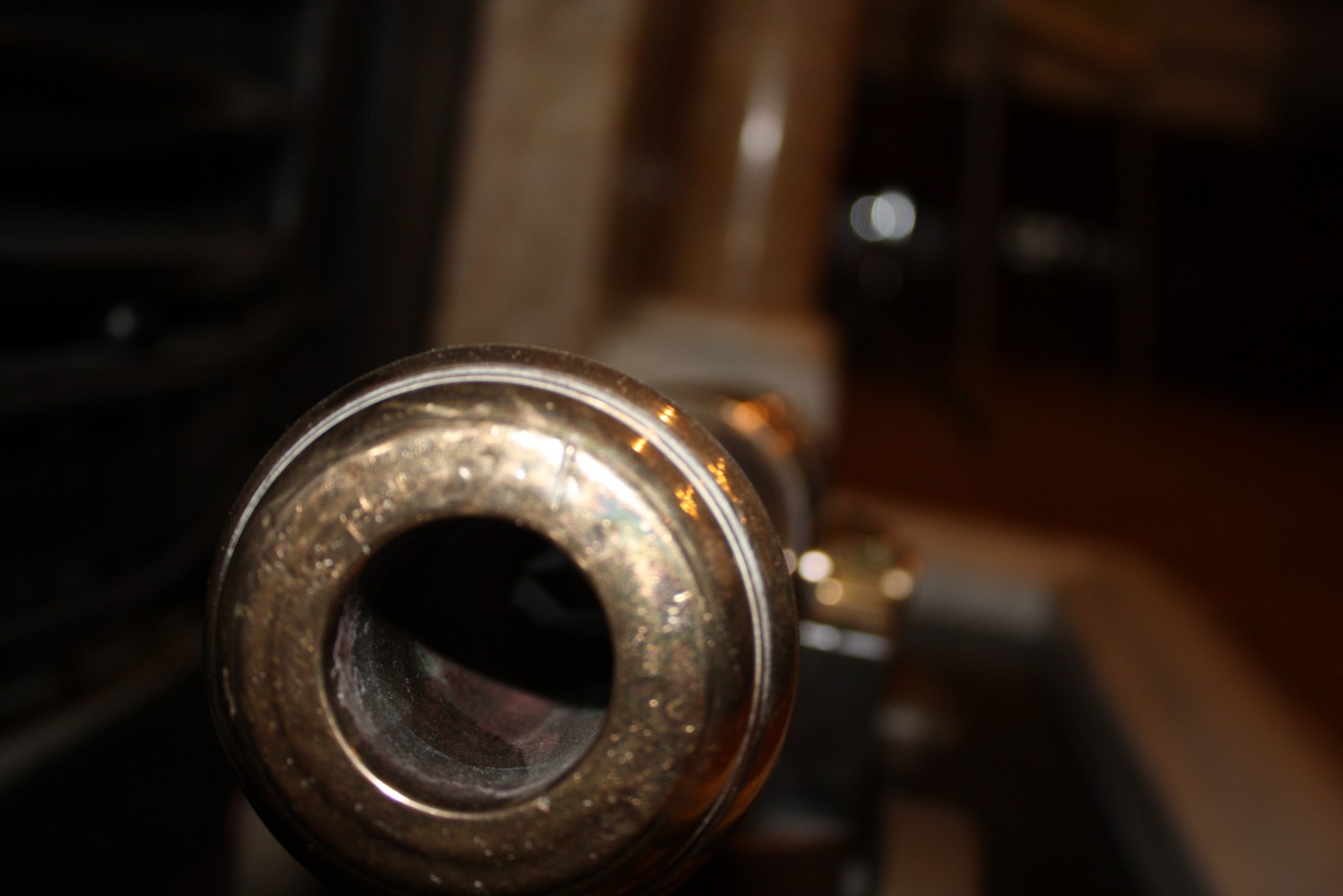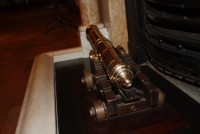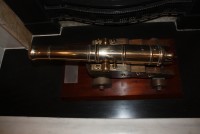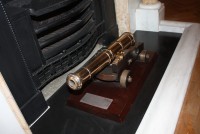Monday, July 31 2017
As a relatively new addition to the LRF Heritage and Education Centre team it is difficult not to be distracted by the beautiful and unique artefacts I am surrounded by at 71 Fenchurch Street. With this in mind, picking just one object as my favourite has been an agonising decision. My choice? A treasure that stands roughly 20cm high with a length of 50 cm in the hearth of the Collcutt building’s old boardroom: a George II brass signal cannon.

Signal cannons, or salute cannons were personal armaments of varying sizes, materials and styles that changed over the years. They are miniature and portable for use on land and at sea. Unlike larger bore cannons, these did not usually fire projectiles, but were there to salute and alert others of their presence in the event of emergency. Increasingly miniature cannons fell out of everyday use and became decorative, sometimes used to signal the start of yacht races.
Though the exact date of the cannon’s forge is unknown, the style is distinctly 18th century, bearing the proof marks of the Worshipful Company of Gunmakers, and of its master; John Bumford; ‘IB.’ The company is still in existence and is one of the 110 Livery Companies in London, incorporated in 1637 by Royal Charter. Bumford was elected master of the company for the years 1751 and 1756, but was known more for the production of pistols and muskets. Later producing guns for both the Honourable East India Company and the Hudson Bay Company until his death in 1775; very few brass cannon bear his distinct mark. Made of brass, the cannon was mounted on a stand in the 1970s with a silver plaque and was presented to the General Committee of Lloyd’s Register by the then Managing Director Colin M Glover. The gun carriage, on which it now stands, was commissioned by LR after consultation with experts at the National Maritime Museum.
However, for as much as we are aware of the cannon’s provenance, it is an object shrouded in rumour and hearsay. The cannon is thought to be one of a pair owned by King George II and having functioned as part of the armament for one of his royal yachts, used on Virginia Water at Windsor Great Park. A popular story records that George II allowed his young children to use the cannon in their games as they re-enacted naval skirmishes and ‘played’ sailor, though this would make the cannon older than it is thought to be; predating Virginia Water which was begun in 1746. It is unknown exactly when the signal cannon was last fired, but despite its artistic ornamental status it is believed to be in full working order.
As this organisation enters its’ 257th year of existence, artefacts like the brass signal cannon are significant. Sitting in pride of place at the foot of the fireplace in the old boardroom, the signal cannon serves as a constant reminder of the kind of society from which the Lloyd’s Register Foundation emerged and the trying, turbulent periods of history through which we have passed. For this reason the brass signal cannon is among my favourite treasures at 71 Fenchurch Street, and an object of high calibre, pun intended.




